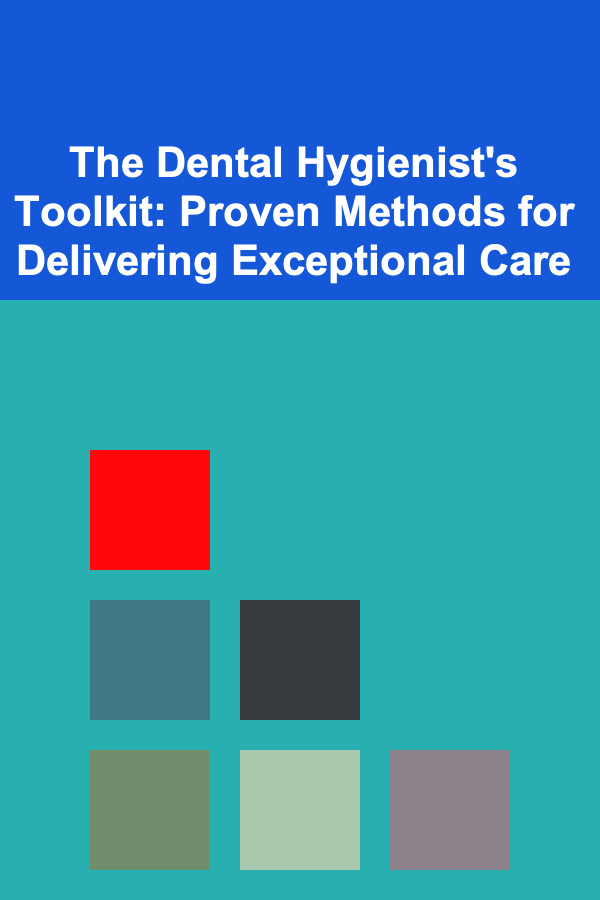
How To Master Building a Brand Around Your POD Products
ebook include PDF & Audio bundle (Micro Guide)
$12.99$10.99
Limited Time Offer! Order within the next:

Building a brand around your Print on Demand (POD) products is a crucial aspect of turning a simple online business into a sustainable, profitable venture. Unlike traditional retail or wholesale businesses, POD allows entrepreneurs to design custom products and sell them directly to consumers without the need for inventory or upfront investment in stock. However, while the business model may seem straightforward, successfully building a brand that resonates with customers requires a blend of strategy, creativity, and long-term vision.
In this article, we'll dive deep into the key steps and strategies involved in building a strong, recognizable brand around your POD products. From understanding your audience to crafting compelling designs and marketing effectively, we will cover all the essential elements for creating a brand that stands out in the crowded world of e-commerce.
Understanding POD and Its Potential
Before we jump into the specifics of brand building, it's important to grasp what Print on Demand is and how it works. POD is a business model where products like t-shirts, mugs, posters, and phone cases are printed and shipped only when a customer places an order. This eliminates the need for inventory management and allows you to focus on creating unique designs for your niche audience.
With platforms like Printful, Printify, and Teespring, entrepreneurs can easily create an online store, upload designs, and start selling without the need for manufacturing or storing products. However, while the technical aspects of POD are simple, the challenge lies in creating a brand that customers recognize, trust, and love.
Step 1: Define Your Niche
A successful brand doesn't just sell products; it solves a problem or fulfills a desire for a specific group of people. This is where defining your niche becomes paramount. Instead of trying to appeal to everyone, focus on a particular group with a shared interest, passion, or problem. A niche market allows you to tailor your designs, messaging, and marketing to a more specific audience, creating a deeper connection with them.
Why Is a Niche Important?
- Less Competition: By narrowing your focus, you'll face less competition compared to broad categories like "clothing" or "accessories."
- Targeted Marketing: A niche enables you to develop more effective marketing campaigns by targeting specific demographics, interests, and behaviors.
- Brand Loyalty: Customers are more likely to resonate with your brand if it speaks directly to their interests or values, which increases the potential for repeat sales and long-term loyalty.
How to Choose Your Niche
When selecting a niche for your POD brand, consider the following:
- Passion and Interest: Choose a niche you are genuinely passionate about, as this will make the process more enjoyable and help you stay motivated.
- Market Research: Conduct research to assess the demand for the niche. Use tools like Google Trends, social media platforms, and competitor analysis to gauge interest.
- Target Audience: Understand who your target audience is, their preferences, age range, lifestyle, and pain points.
- Profit Potential: Evaluate the potential for profitability in your chosen niche. Consider the types of products that would appeal to your audience and the average price point.
Once you've settled on your niche, you'll have a clearer understanding of the brand you want to build, which will influence your design process, messaging, and marketing efforts.
Step 2: Develop a Unique Brand Identity
Your brand identity is what differentiates you from other POD sellers. It's the personality and values your brand conveys through its visuals, tone, and messaging. To build a memorable brand, you need to establish a strong, cohesive identity that resonates with your target audience.
Key Elements of Brand Identity
- Brand Name: Your brand name should be memorable, unique, and reflective of your niche. It should be easy to pronounce, spell, and ideally have a connection to the products or values you represent.
- Logo: A well-designed logo is one of the most recognizable elements of a brand. It should be simple, versatile, and visually communicate your brand's message.
- Color Palette: Colors evoke emotions and associations. Choose a color palette that reflects the tone and personality of your brand. For example, blue is often associated with trust and professionalism, while orange conveys energy and enthusiasm.
- Typography: Consistent typography helps reinforce your brand's personality. Choose fonts that are easy to read and align with the mood of your brand.
- Tagline and Brand Message: Craft a tagline or mission statement that clearly explains what your brand stands for. This message should be consistent across all marketing channels, from your website to social media.
Consistency Is Key
Once you've established your brand identity, it's important to ensure consistency across all touchpoints. Whether it's your website, social media, or product packaging, maintaining a consistent visual and tonal approach helps build recognition and trust.
Step 3: Create High-Quality, Unique Designs
In the world of POD, your designs are what make your brand stand out. Unlike traditional retail businesses, where your products might be manufactured in bulk and sold by various sellers, POD products are all about uniqueness and creativity. To build a strong brand, your designs should reflect your niche and appeal to your target audience's preferences.
Tips for Designing POD Products
- Understand Your Audience's Preferences: Research your target market to understand what type of designs will resonate with them. Are they looking for humor, inspirational quotes, minimalist aesthetics, or bold, vibrant patterns?
- Quality Over Quantity: Focus on creating a few high-quality, impactful designs rather than flooding your store with numerous generic ones. A few standout designs that perfectly capture your brand will have a much greater impact.
- Collaborate with Designers: If you're not a designer yourself, consider collaborating with graphic designers or using freelance platforms like Fiverr or 99designs to create unique, professional designs.
- Consider Product Variety: Your designs should work across different product types, such as t-shirts, hoodies, mugs, and posters. Ensure that your designs are adaptable to different formats and sizes.
Mockups and Visualization
Once your designs are ready, use mockup generators (many POD platforms offer these tools) to visualize how your products will look in real life. High-quality mockups give customers a clear idea of what they are purchasing, which increases the likelihood of conversion.
Step 4: Set Up Your Online Store
Now that you have your niche, brand identity, and designs in place, it's time to set up your online store. This is where you'll showcase your products and start converting visitors into customers.
Platforms to Consider
Several POD platforms allow you to create an online store with minimal effort:
- Shopify + Print on Demand Apps: Shopify is one of the most popular e-commerce platforms, and it integrates seamlessly with POD services like Printful, Printify, and Gooten.
- Etsy: Etsy is a marketplace where people often look for unique, handcrafted, and personalized items. It's a great platform for POD entrepreneurs to gain exposure.
- Redbubble: Redbubble allows artists to upload their designs and sell them on various products. It's a great option if you want a marketplace without worrying about managing your own store.
- TeeSpring: TeeSpring is a platform specifically designed for selling custom apparel and merchandise.
When setting up your store, focus on the following:
- User-Friendly Navigation: Ensure that your store is easy to navigate, with clear categories and product descriptions.
- Compelling Product Descriptions: Write product descriptions that highlight the benefits of each item and explain how it fits into your niche or solves a problem.
- High-Quality Images: Use high-resolution images and mockups to show off your products from different angles.
Step 5: Marketing Your POD Brand
Even the best products won't sell if no one knows about them. Effective marketing is essential for driving traffic to your store and converting visitors into customers. There are several ways to market your POD brand, and a mix of strategies will help you build a strong online presence.
Social Media Marketing
Social media is one of the most powerful tools for promoting your POD brand. It allows you to connect directly with your audience, showcase your designs, and build brand loyalty.
- Instagram: Instagram is a visual platform perfect for showcasing your designs. Use high-quality images, behind-the-scenes content, and user-generated content to engage your followers.
- Facebook: Facebook's targeted advertising options make it an excellent choice for reaching specific demographics.
- Pinterest: Pinterest is a discovery platform where users often search for inspiration. By creating visually appealing pins, you can drive traffic to your store.
- TikTok: TikTok's short video format is perfect for showcasing creative products and engaging with a younger audience.
Content Marketing
Create valuable content around your niche to attract potential customers. This could be in the form of blog posts, videos, podcasts, or social media content. The goal is to educate, entertain, or inspire your audience while subtly promoting your products.
- Blogging: Write about topics related to your niche. For example, if you sell motivational t-shirts, create blog posts about personal development, goal-setting, or positive thinking.
- YouTube: Create product reviews, unboxing videos, or design tutorials to engage with your audience and promote your POD products.
- Email Marketing: Build an email list to stay in touch with your audience. Offer discounts, new product launches, and exclusive content to keep them engaged.
Influencer Marketing
Partnering with influencers in your niche can provide a major boost to your brand's visibility. Look for influencers with an engaged following who align with your brand's values and target audience. They can promote your products through sponsored posts, giveaways, or affiliate marketing.
Paid Advertising
Paid advertising, particularly Facebook Ads and Google Ads, can be a highly effective way to reach new customers. By targeting specific interests, demographics, and behaviors, you can attract individuals who are most likely to purchase your products.
Step 6: Providing Exceptional Customer Service
Building a brand goes beyond just creating a website and marketing your products. Excellent customer service plays a crucial role in building long-term relationships with your customers and generating positive reviews and repeat business.
- Respond Promptly: Answer customer inquiries quickly and professionally, whether it's through email, social media, or live chat.
- Resolve Issues Gracefully: If a customer has an issue with a product, resolve it swiftly and with empathy.
- Encourage Reviews: Positive reviews help build trust. Encourage happy customers to leave reviews on your website or social media channels.
Conclusion
Building a brand around your POD products is a process that requires time, effort, and a clear strategy. By defining your niche, developing a unique brand identity, creating high-quality designs, setting up an easy-to-navigate online store, and effectively marketing your products, you can build a brand that resonates with your target audience. With the right approach, your POD business can not only be profitable but also memorable and meaningful to your customers.

How to Create a Custom Cleaning Routine for Your Home
Read More
How to Create a Decluttering Strategy for Large Workspaces
Read More
How to Plan an Organized Family Game Night
Read More
The Dental Hygienist's Toolkit: Proven Methods for Delivering Exceptional Care
Read More
Unlocking Strategies: A Comprehensive Guide to Marketing Management
Read More
How To Repair a Cracked Window Pane
Read MoreOther Products

How to Create a Custom Cleaning Routine for Your Home
Read More
How to Create a Decluttering Strategy for Large Workspaces
Read More
How to Plan an Organized Family Game Night
Read More
The Dental Hygienist's Toolkit: Proven Methods for Delivering Exceptional Care
Read More
Unlocking Strategies: A Comprehensive Guide to Marketing Management
Read More